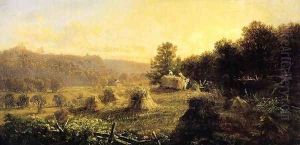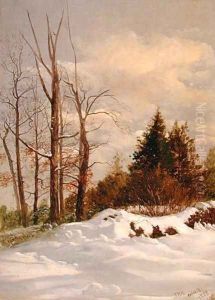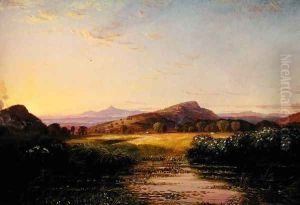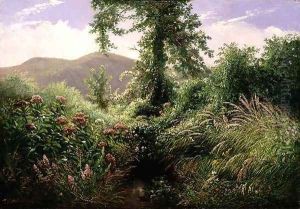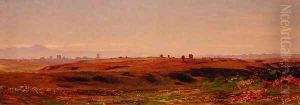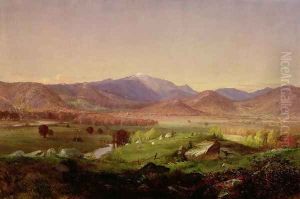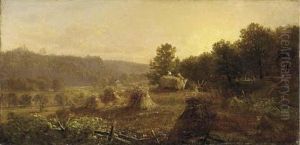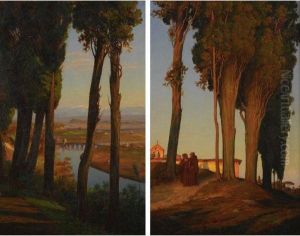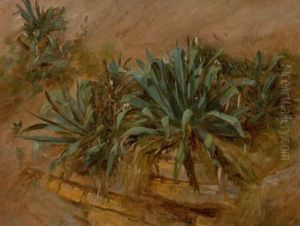Thomas Hiram Hotchkiss Paintings
Thomas Hiram Hotchkiss was an American landscape painter, celebrated for his evocative depictions of the Italian and Roman countryside. Born in Homer, New York, in 1833, Hotchkiss showed an early inclination towards the arts. Despite this, his initial career path took him in a different direction; he attended Hamilton College in Clinton, New York, with the intention of becoming a lawyer. However, his passion for painting couldn't be subdued, and he eventually decided to pursue art as a career.
After his decision to focus on art, Hotchkiss traveled to Europe to hone his skills, a common practice among American artists of the time who sought inspiration and instruction in the Old World. He spent significant time in Italy, particularly in Rome, where he was deeply influenced by the Italian landscape and light. The Roman Campagna, with its ancient ruins and pastoral landscapes, became a recurring subject in his work. Hotchkiss was part of the second generation of artists working in Italy who followed the Hudson River School's tradition, incorporating their emphasis on natural beauty and detailed realism into his own unique vision.
His works were characterized by meticulous attention to detail and a profound appreciation of nature's beauty, capturing the serene and timeless aspects of the Italian countryside. Hotchkiss's landscapes were not just representations of specific locations but were imbued with a sense of emotional depth and poetic sensibility. His paintings often featured elements that evoked a romanticized view of nature, with ancient ruins and lush vegetation coexisting in harmonious compositions.
Unfortunately, Thomas Hiram Hotchkiss's career was cut short by his untimely death in Rome in 1869, at the age of 36. Despite his early death, his work left a lasting impact on the landscape genre, contributing to the ongoing appreciation of the Italian landscape in American art. Today, his paintings can be found in various American museums, where they continue to be celebrated for their beauty and historical significance.
